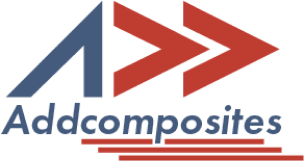


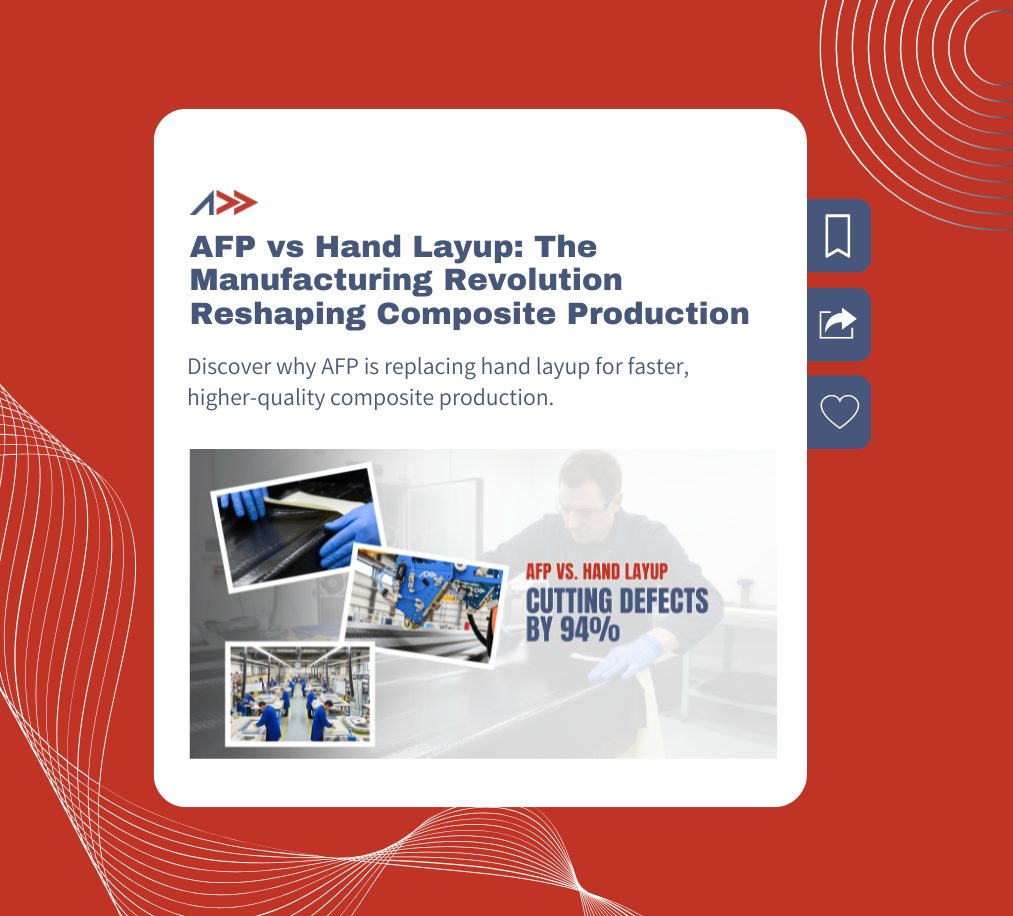



Automated Fiber Placement has evolved from a $5 million aerospace-exclusive technology into an accessible $3,500-per-month solution that outperforms hand layup by 40x in production speed while reducing material waste from 50% to under 6%. This transformation represents not merely incremental improvement but a fundamental restructuring of composite manufacturing economics, quality paradigms, and market accessibility.


The journey of Automated Fiber Placement from conception to mainstream adoption illustrates a rare case of disruptive technology evolution.

First documented in 1974 as an individual tow concept, AFP emerged commercially in the late 1980s when Hercules Aerospace and Cincinnati Machine deployed systems to Boeing, Lockheed, and Northrop. These pioneering systems—massive gantry configurations requiring dedicated facilities and $2-10 million capital investments—remained exclusive to major aerospace primes for two decades.
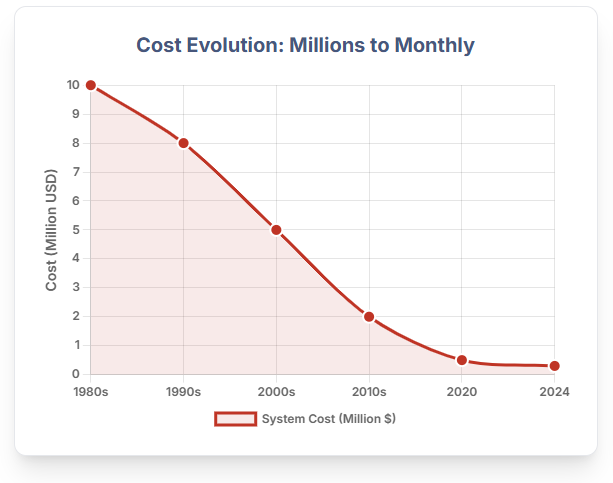
The business model innovation proved equally disruptive. Companies like Addcomposites, founded by former ISRO space scientist Pravin Luthada, pioneered subscription models offering industrial-grade AFP systems for €3,499 monthly—equivalent to employing 1-2 skilled laminators.
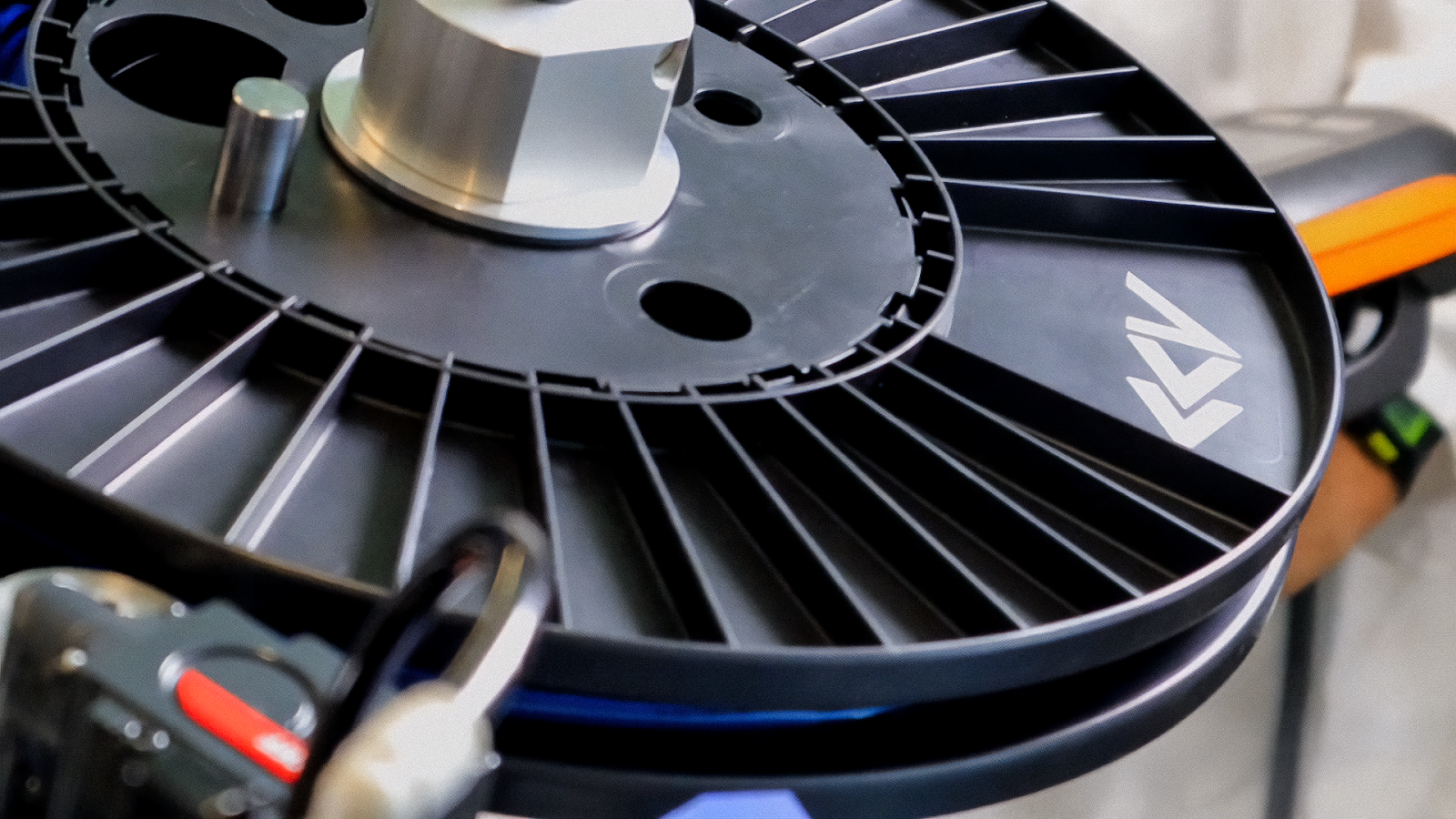
The symbiotic evolution of materials and processing technologies defines modern composite manufacturing capabilities. AFP and hand layup exhibit fundamentally different material compatibility profiles.

Thermoset prepregs—the traditional aerospace workhorse—illustrate both processes at their respective strengths. Hand layup excels with material tackiness enabling manual draping over complex contours, though demanding refrigerated storage, limited shelf life, and careful out-time management.
Thermoplastic composites represent AFP's decisive advantage. Materials like PEEK, PEKK, and PPS require heating above 400°C with high compaction pressure—beyond hand layup capability. AFP systems employ laser heating, force-controlled rollers, and controlled cooling, achieving in-situ consolidation that eliminates autoclave requirements.
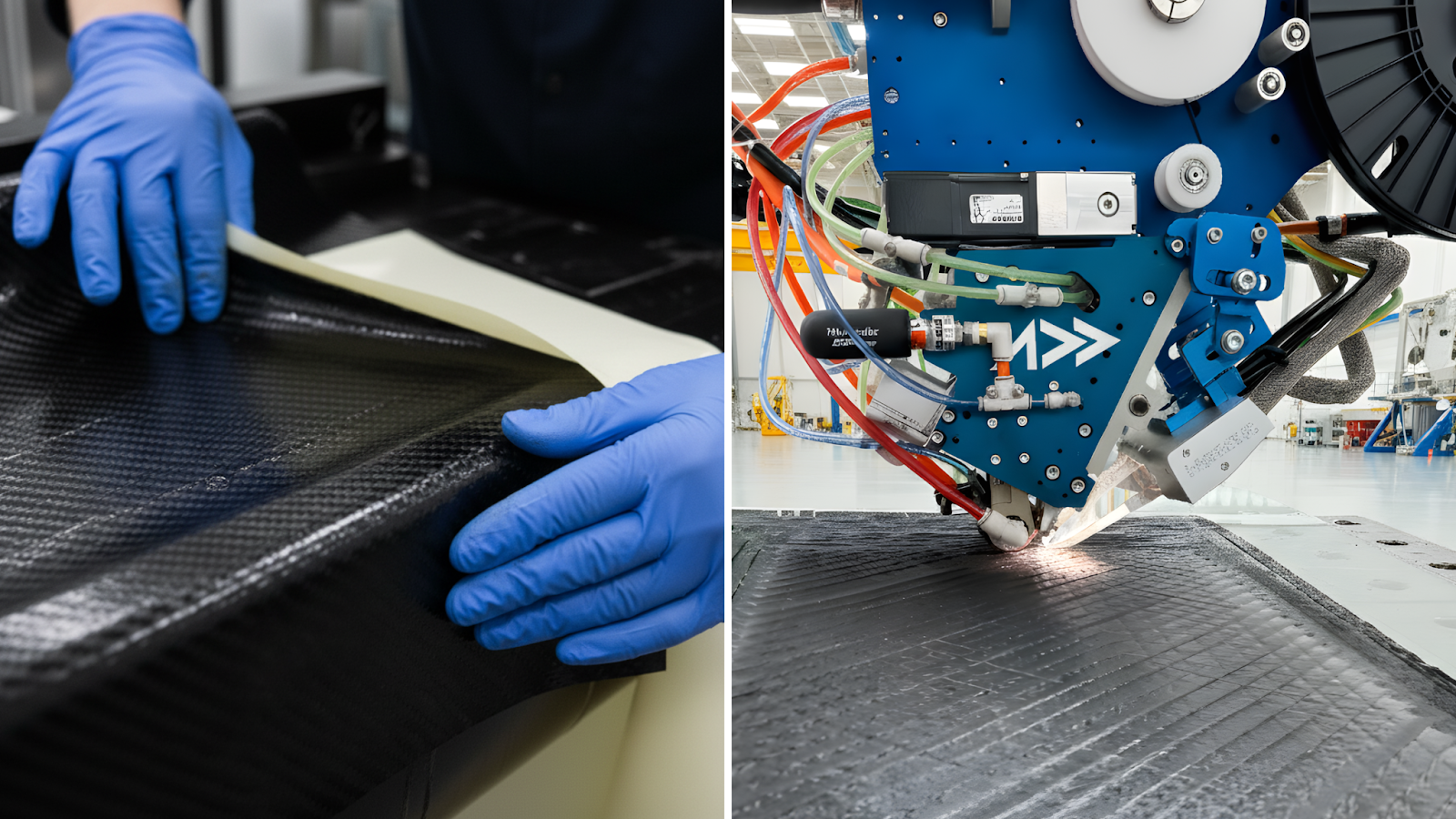
The cost structure evolution from labor-intensive manual processes to capital-intensive automation fundamentally alters manufacturing economics.
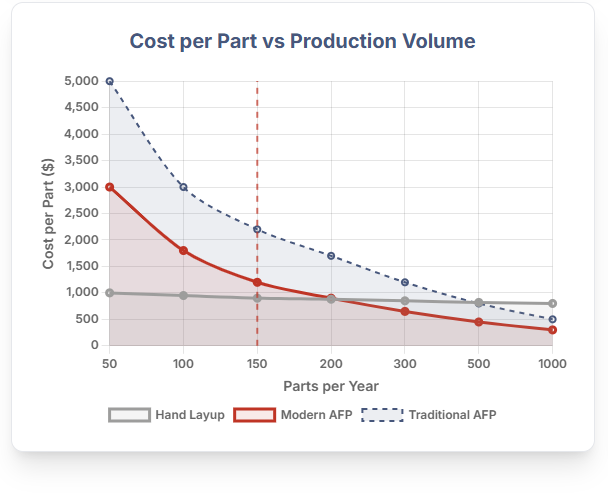
Capital investment represents the most visible differential. Hand layup requires minimal infrastructure: molds, hand tools, and ventilation systems totaling $10,000-100,000. Traditional AFP systems required $2-10 million, while modern modular systems cost $300,000-500,000 purchased or €3,000-4,000 monthly leased.
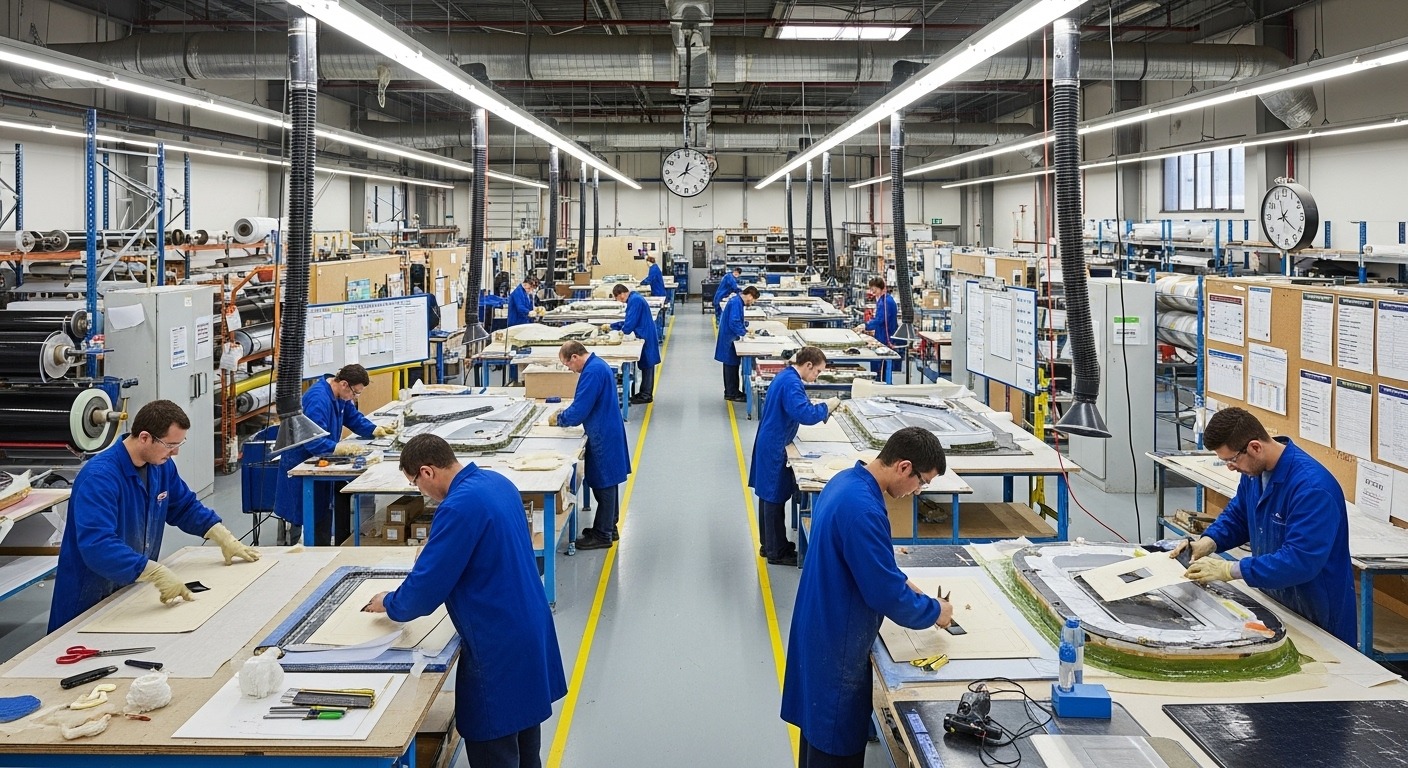
Quality control evolution from subjective assessment to data-driven precision represents a fundamental paradigm shift in composite manufacturing.
Statistical Process Control represents AFP's transformative quality advantage. Every placement parameter—temperature, pressure, speed, position—generates traceable data enabling real-time adjustments and predictive maintenance. Modern systems achieve process capability indices (Cpk) exceeding 2.0, indicating Six Sigma performance levels.
The convergence of AFP with digital technologies exemplifies Industry 4.0's transformative potential in advanced manufacturing.

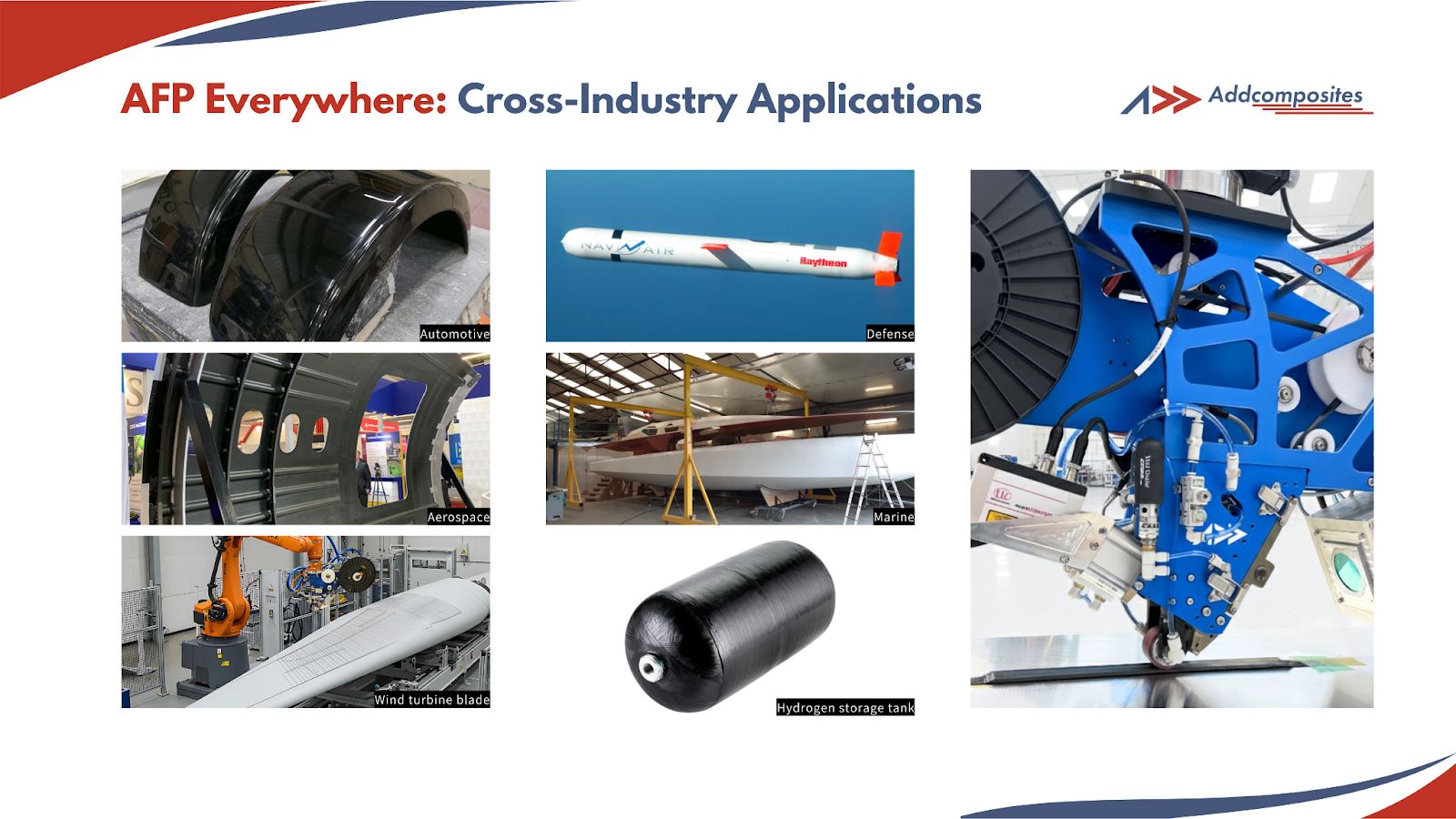
The democratization of AFP technology catalyzes adoption across diverse sectors previously excluded by cost barriers.

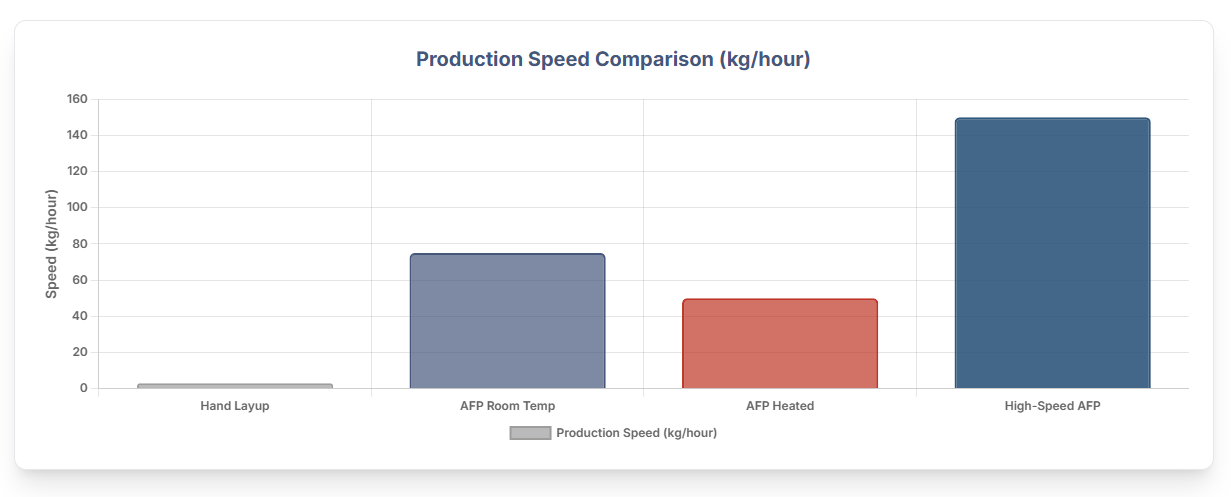
The transition from hand layup to Automated Fiber Placement represents more than technological evolution—it's a fundamental restructuring of composite manufacturing economics, quality systems, and market accessibility.
The data speaks decisively: at production volumes exceeding 150 parts annually, AFP delivers 43% cost reductions while achieving 40x productivity gains and 94% defect reduction. For the $10 billion ATP/AFP equipment market projected to reach $25 billion by 2034, the question isn't whether to automate, but when and how.
Hand layup retains its niche in prototyping, repair work, and highly complex geometries where human dexterity excels. But for production manufacturing, the economics are irrefutable: modern AFP systems at $3,500 monthly lease rates match the cost of employing 1-2 laminators while delivering superhuman speed, quality, and consistency.
The future isn't approaching—it's here, accessible, and transforming composite manufacturing from artisanal craft to engineered science. The only question remaining: Will you lead or follow the automation revolution?
[1] Addcomposites. "The Evolution of Automated Fiber Placement: Early Developments to Modern Applications." https://www.addcomposites.com/post/the-evolution-of-automated-fiber-placement-early-developments-to-modern-applications
[2] LinkedIn. "AFP and ATL Composites - The Dawn of Automation in Aerospace Composites Manufacturing." https://www.linkedin.com/pulse/afp-atl-composites-dawn-automation-aerospace-soumya-gupta
[3] Addcomposites. "Overview of Automated Fiber Placement Process." https://www.addcomposites.com/post/overview-of-automated-fiber-placement-process
[4] Addcomposites. "Choosing the Right Automated Fiber Placement System for Your Needs." https://www.addcomposites.com/post/choosing-the-right-automated-fiber-placement-system-for-your-needs
[5] Addcomposites. "How much does an Automated Fiber Placement machine cost?" https://www.addcomposites.com/post/how-much-does-an-automated-fiber-placement-machine-cost
[6] Business Wire. "Global AFP/ATL Machines Market by Machine Type, End-User and Region (2019-2024)." https://www.businesswire.com/news/home/20190313005588/en/
[7] Addcomposites. "Addcomposites' AFP-XS System: Democratizing Automated Fiber Placement for Small and Medium Enterprises." https://www.addcomposites.com/post/addcomposites-afp-xs-system-democratizing-automated-fiber-placement-for-small-and-medium-enterprises
[8] PR Newswire. "AFP/ATL Machines Market to Reach US$ 294.7 Million in 2024, Says Stratview Research." https://www.prnewswire.com/news-releases/afpatl-machines-market-to-reach-us-294-7-million-in-2024--says-stratview-research-300790808.html
[9] PR Newswire. "Aerospace Composites Market is expected to generate a revenue of USD 47.54 Billion by 2032, Globally, at 9.36% CAGR." https://www.prnewswire.com/news-releases/aerospace-composites-market-is-expected-to-generate-a-revenue-of-usd-47-54-billion-by-2032--globally-at-9-36-cagr---market-research-intellect-302391566.html
[10] Compositeskn. "Hand layup prepreg (Autoclave/Out-of-autoclave) processing - A291." https://compositeskn.org/KPC/A291
[11] ScienceDirect. "Hand Lay-up - an overview." https://www.sciencedirect.com/topics/engineering/hand-lay-up
[12] Compositeskn. "Automated fibre placement (AFP) - A303." https://compositeskn.org/KPC/A303
[13] Wevolver. "What is Automated Fiber Placement (AFP) in Composites Manufacturing?" https://www.wevolver.com/article/what-is-automated-fiber-placement-afp-in-composites-manufacturing
[14] NASA Technical Reports Server. "Automated Fiber Placement Manufactured Composites for Science Applications." https://ntrs.nasa.gov/api/citations/20190000862/downloads/20190000862.pdf
[15] ScienceDirect. "In situ consolidation of carbon fiber PAEK via laser-assisted automated fiber placement." https://www.sciencedirect.com/science/article/abs/pii/S1359836822007788
[16] Addcomposites. "An in-depth look at the in-situ consolidation in thermoplastic composites." https://www.addcomposites.com/post/an-in-depth-look-at-the-in-situ-consolidation-in-thermoplastic-composites
[17] Addcomposites. "How AFP Technology Unlocks Sustainable and Recyclable Composites." https://www.addcomposites.com/post/how-afp-technology-unlocks-sustainable-and-recyclable-composites
[18] Addcomposites. "The Automated Fiber Placement Process: Design Cycle, Benefits, and Applications." https://www.addcomposites.com/post/the-automated-fiber-placement-process-design-cycle-benefits-and-applications
[19] Addcomposites. "Composites Waste - How to Track and Reduce Waste?" https://www.addcomposites.com/post/composites-manufacturing-tracking-and-reducing-waste
[20] Resin Library. "Hand Layup." https://www.resinlibrary.com/knowledge/article/hand-layup/
[21] CompositesWorld. "A ROADMAP TO AUTOMATED COMPOSITES." https://www.compositesworld.com/cdn/cms/uploadedfiles/roadmap-to-automated-composites.pdf
[22] Plataine. "The Labor Shortage is Killing Aerospace Composites Manufacturing." https://www.plataine.com/blog/labor-shortage-is-killing-aerospace-composites-manufacturing/
[23] ISG. "Why the Aerospace and Defense Industry Faces a Million-Person Talent Gap by 2030." https://isg-one.com/articles/why-the-aerospace-and-defense-industry-faces-a-million-person-talent-gap-by-2030---and-what-it-means-for-innovation
[24] ResearchGate. "Developing a cost comparison technique for hand layup versus automated fibre placement and infusion versus out-of-autoclave." https://www.researchgate.net/publication/326059802
[25] Addcomposites. "What are the Applications of Composite Materials Today?" https://www.addcomposites.com/post/where-are-composites-used
[26] CompositesWorld. "Manufacturing Processes." https://www.compositesworld.com/kc/automated-composites/acm-processes
[27] CompositesWorld. "ATL and AFP: Defining the megatrends in composite aerostructures." https://www.compositesworld.com/articles/atl-and-afp-defining-the-megatrends-in-composite-aerostructures
[28] Spirit AeroSystems. "World's Largest User of AFP Technology." https://www.spiritaero.com/pages/article/spirit-solidifies-position-as-worlds-largest-user-of-afp-technology/
[29] Market Research Future. "Wind Turbine Blade Market Size, Growth Analysis, Trends 2034." https://www.marketresearchfuture.com/reports/wind-turbine-blade-market-1150
[30] Addcomposites. "Understanding and Predicting Manufacturing Defects in Automated Fiber Placement Composites." https://www.addcomposites.com/post/understanding-and-predicting-manufacturing-defects-in-automated-fiber-placement-composites
[31] ScienceDirect. "Effect of automated fiber placement (AFP) manufacturing signature on mechanical performance of composite structures." https://www.sciencedirect.com/science/article/abs/pii/S0263822319317672
[32] Ifremer. "Analysis of manufacturing defects and their effects on the mechanical behavior of fiber reinforced composite structures." https://archimer.ifremer.fr/doc/00275/38609/37138.pdf
[33] Taylor & Francis Online. "Hand layup: understanding the manual process." https://www.tandfonline.com/doi/full/10.1080/20550340.2015.1114801
[34] Addcomposites. "The Insane Engineering Behind Automated Fiber Placement." https://www.addcomposites.com/post/the-insane-engineering-behind-automated-fiber-placement
[35] 6 Sigma. "Process Capability Index (Cpk) for Business Success." https://www.6sigma.us/process-improvement/process-capability-index-cpk/
[36] ScienceDirect. "Process Capability - an overview." https://www.sciencedirect.com/topics/engineering/process-capability
[37] Sage Journals. "Manufacturing composite laminates with controlled void content through process control." https://journals.sagepub.com/doi/full/10.1177/07316844231154585
[38] Sage Journals. "Effects of defects in automated fiber placement laminates and its correlation to automated optical inspection results." https://journals.sagepub.com/doi/full/10.1177/07316844221093273
[39] Addcomposites. "The AFP-X Advantage: Scaling Multi-Tow Production for Complex Geometries." https://www.addcomposites.com/post/the-afp-x-advantage-scaling-multi-tow-production-for-complex-geometries
[40] Sensorprod. "Composite Layup Techniques for Aerospace and Engineering." https://www.sensorprod.com/glossary/composite-layup/
[41] Baker Hughes. "Ultrasonic Inspection Solutions for Aerospace Composites." https://www.bakerhughes.com/waygate-technologies/industrial-ultrasonic-testing-equipment/automated-ultrasonic-testing-1/composites-inspection
[42] Fraunhofer. "DIGIMAP | Digital Twin for AFP-Processes." https://www.igcv.fraunhofer.de/en/research/reference_projects/digimap_digital_twin_advanced_manufacturing_afp.html
[43] AS9100 Store. "AS9100: What is it? Who needs it?" https://as9100store.com/aerospace-standards-explained/what-is-as9100/
[44] MDPI. "A Survey on AI-Driven Digital Twins in Industry 4.0: Smart Manufacturing and Advanced Robotics." https://www.mdpi.com/1424-8220/21/19/6340
[45] Addcomposites. "Optimizing Manufacturing Processes: AFP and Filament Winding Techniques for Thermoplastic Composites." https://www.addcomposites.com/post/optimizing-manufacturing-processes-afp-and-filament-winding-techniques-for-thermoplastic-composites
[46] PubMed Central. "The Effect of Repass Treatment on the Mechanical Properties and Microstructure of CF/PEKK Thermoplastic Composite Laminates." https://pmc.ncbi.nlm.nih.gov/articles/PMC11722813/
[47] Addcomposites. "What is Automated Fibre Placement (AFP)?" https://www.addcomposites.com/post/what-is-automated-fibre-placement-afp
[48] Addcomposites. "AFP vs Filament Winding for Hydrogen Tank Production." https://www.addcomposites.com/post/afp-vs-filament-winding-for-hydrogen-tank-production
[49] Coherent Market Insights. "Automated Fiber Placements And Automated Tape Laying Machines Market." https://www.coherentmarketinsights.com/market-insight/automated-fiber-placements-and-automated-tape-laying-machines-market-4428
[50] CompositesWorld. "Consolidating thermoplastic composite aerostructures in place, Part 2." https://www.compositesworld.com/articles/consolidating-thermoplastic-composite-aerostructures-in-place-part-2
[51] Pirancomposites. "Discover Applications of Composites in Marine Industry." https://pirancomposites.com/news/applications-of-composites-marine-industry/